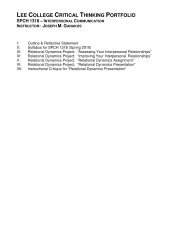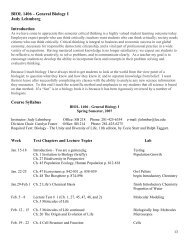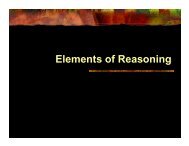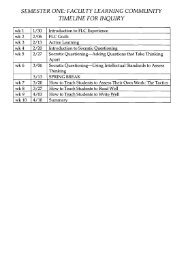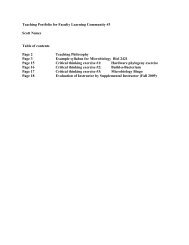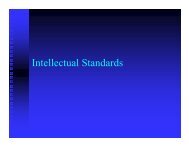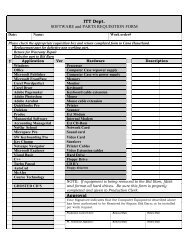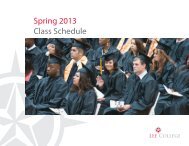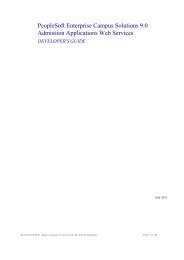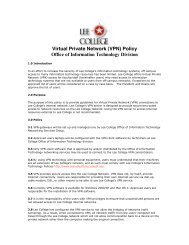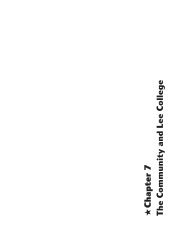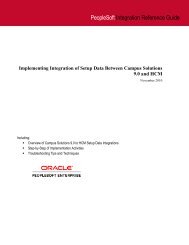Cheryl Willard - Lee College
Cheryl Willard - Lee College
Cheryl Willard - Lee College
You also want an ePaper? Increase the reach of your titles
YUMPU automatically turns print PDFs into web optimized ePapers that Google loves.
Practice #1:<br />
Considering the Opposite Point of View<br />
At the beginning of the semester, students will complete a “Fact or Falsehood”<br />
questionnaire (see next page) containing items about which students often have erroneous<br />
ideas (e.g., “Advertisers are able to shape our buying habits through subliminal messages”).<br />
They will indicate whether they believe the item to be true or false and the degree to which<br />
they agree or disagree with the item on a scale from 1 to 6. Afterward, I will assess the<br />
questionnaires and make note of those items with which students’ opinions were the most<br />
incompatible with existing scientific knowledge as indicated by their ratings (e.g., Agree or<br />
Strongly Agree).<br />
In the last two weeks of the semester, after relevant content has been covered and<br />
students have been exposed to critical and scientific thinking, they will be given a take-home<br />
assignment in which they will write an essay on one of the above topics supporting a position<br />
opposite of their own. The topics will be pre-assigned to students based on their responses to<br />
the questionnaire but they will be allowed to choose from among three. According to Miller<br />
et. al. (1996), the technique is most effective if students have an element of free choice in the<br />
assignment. The instructions for writing the assignment will be as follows:<br />
Choose one of the topics below and write a persuasive essay in support of<br />
the position. Support the position with as many valid arguments as you<br />
can think of using both your textbook and other outside sources to reinforce<br />
your case. Essays should be type-written – one page in length, one-inch<br />
margins (top, bottom, right, and left), double-spaced, Times New Roman, 12-<br />
point font. Use a second page to document all of the sources that you used,<br />
including your textbook, internet sources, and other books or journals.<br />
During the last class day, I will again administer the “Fact or Falsehood” questionnaire<br />
noting any change in beliefs and paying special attention to the items for which students had<br />
written an essay. This will provide an informal assessment the effectiveness of this technique<br />
to alter students’ mistaken beliefs.<br />
8



